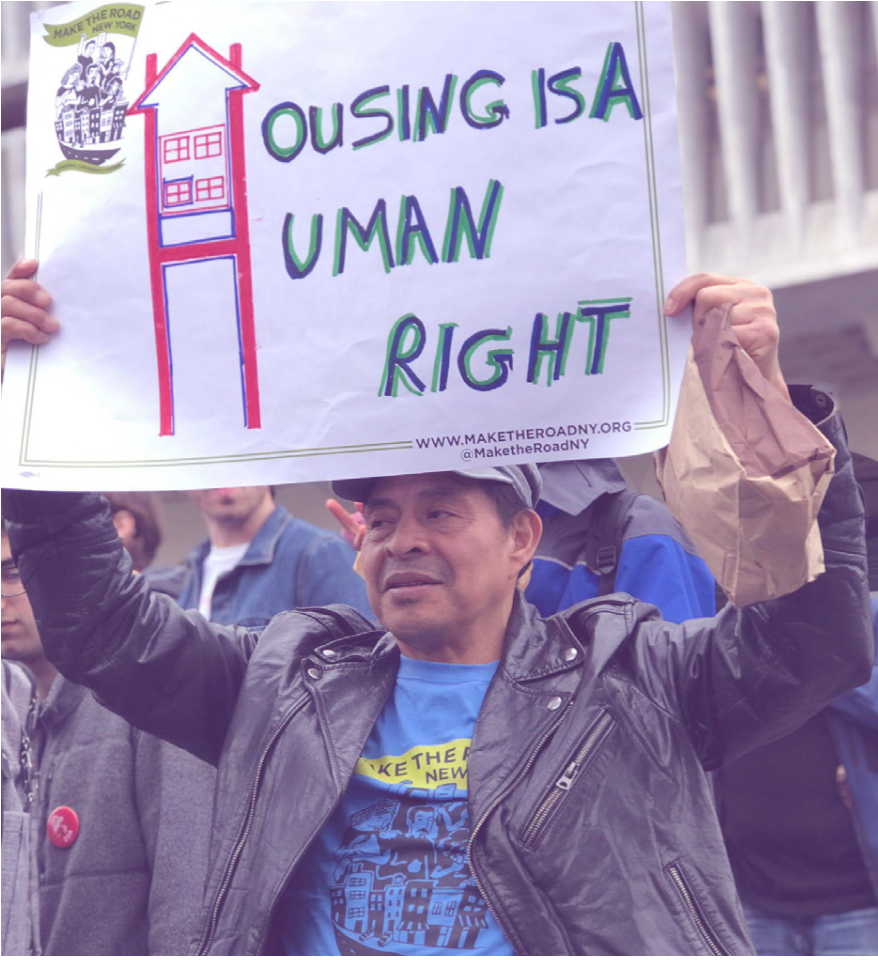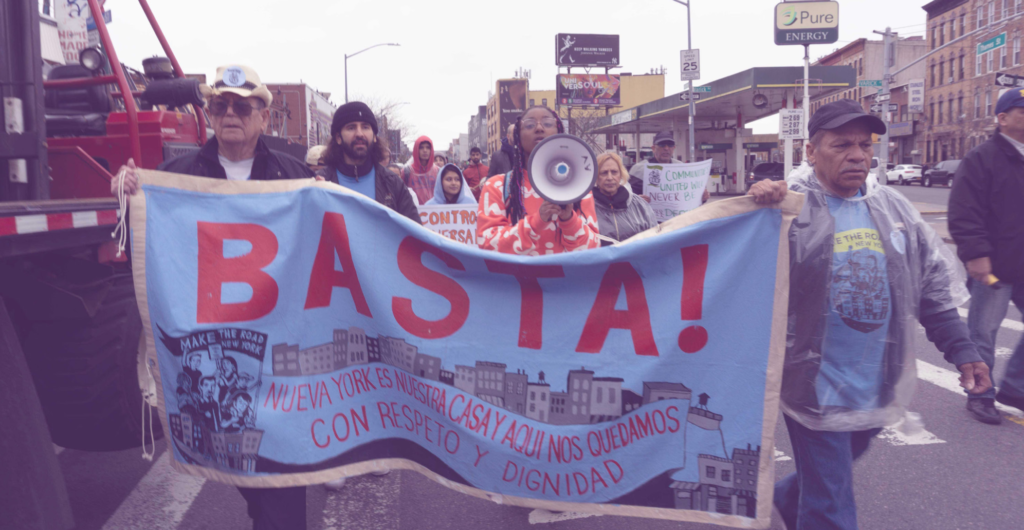Priority 2
Prioritize Need Over Numbers
READ THE REPORT
The de Blasio administration’s Housing New York plan has prioritized numbers-driven deal making over long-term, needs-based solutions in its affordable housing construction and preservation agenda. The Mayor set an ambitious goal of creating and preserving 300,000 units of affordable housing by 2026. Yet the push to meet this target meant the units built did not meet the needs of New Yorkers with the least income, least choice, limited resources, and limited access. An analysis from the office of the City Council Speaker last year showed that Housing New York has not come close to meeting the city’s need for housing for severely rent-burdened, extremely low- and very low-income New Yorkers – those most at risk of becoming homeless – while at the same time overproducing income-restricted units for moderate- and middle-income New Yorkers.8 Meanwhile, as the city grappled with record homelessness, only about 7.5% of the housing starts (both preservation and new construction) between FY 2018-2020 were set aside for the formerly homeless.
Additionally, recent data shows that the city’s Mandatory Inclusionary Housing (MIH) policy adopted during the de Blasio administration is not working for those with the most need. 89% of apartments approved through project-specific MIH rezonings, including 75% of the “affordable” units in those developments, are unaffordable to the average resident in the neighborhood where they are located without additional subsidies, and most Black, Latinx, and Asian New Yorkers can- not afford the majority of units created through MIH.10 Specifically, the options offered under MIH allow a developer to select a percentage of units at 40%, 60%, and 80% of Area Median Income (AMI), leaving no options for those making less than 40% AMI ($40,960 for a family of three). Similarly, the lowest income that City-subsidized affordable housing can provide for is 30% AMI ($23,880 for a family of three). Especially because new “affordable housing” tends to be located in low-income communities, thousands of residents who watch brand new buildings go up in their neighborhoods do not qualify by income for those apartments.

In fact, these new “affordable” units, created both through MIH and with City subsidies, have done little to address the city’s history of housing segregation. According to Where We Live, the largest numbers of new affordable housing units have been located primarily in low-income communities of color, including the South Bronx, East Harlem, and East New York, while primarily white areas such as most of Staten Island, southern Brooklyn, and many parts of Manhattan below 96th Street have seen few-to-no new affordable units built.
Simultaneously, the administration has struggled with deep budget deficits in its public housing- now estimated at $40 billion – and has proposed a number of solutions to raise revenue for repairs: first NextGen NYCHA, which advanced private infill development on NYCHA land; then PACT /RAD, which aims to place 62,000 public housing units – roughly a third of the NYCHA stock – into a program in which private developers enter into long-term leases with NYCHA, take over as build- ing management, and renovate buildings using privately-leveraged financing; and, most recently, the proposed Blueprint for Change, which would transfer ownership of the remaining two-thirds of NYCHA’s public housing stock to a publicly-chartered Preservation Trust, using federal funds and private bonds to rehabilitate the distressed housing.12 Meanwhile, resident trust in NYCHA leadership has been eroded such that any plan that does not include significant resident engagement and empowerment in decision-making faces a tough road ahead.
The Integrated Housing Plan must focus on providing permanent, deeply affordable hous- ing for those who need it most and preserving public housing without privatization.

Strategies
Priority 2: Prioritize Need Over Numbers
- Provide more and deeper affordability citywide. As discussed, MIH and HPD term sheets are not providing for the neediest New Yorkers. And much of the housing built in the city is “as of right” and provides no affordability whatsoever. Though this has long been the norm, it need not continue. The City must develop new and innovative strategies to meet New Yorkers’ affordability needs citywide through new zoning tools or other regulatory framework(s). It must also update its term sheets and programs to provide for much deeper affordability than currently required, and identify ways to apply these programsin affluent neighborhoods.
- Invest in subsidies over tax breaks. Creating more housing for the lowest-income New Yorkers requires some combination of: an expansion of incomes that current housing subsidies will serve to include individuals and families on fixed incomes or making less than 30% AMI, expansion of vouchers such as Federal Section 8, or a new source of ongoing support through operating subsidies that will allow more tenants to pay lower rents without compromising building operations and maintenance.13 The City must create an ongoing rental assistance program for tenants that also functions as an operating subsidy for building owners. The City should explore financing such a program by working with the State to end tax breaks for developers, such as the 421-a tax exemption, and using the collected tax revenues from luxury development projects to provide ongoing income subsidies based on need. 421-a creates housing for those making up to 130% AMI, exacerbating the issue that affordable housing created does not meet the needs on the ground, while costing New York State an estimated $2.8 billion per year14. This is far more than the total amount of Federal Section 8 vouchers administered by NYCHA; in fact, if this amount were applied to a similar voucher program, it could house well over 100,000 of the city’s poorest families.
- Prioritize affordable housing for project approvals. Utilize interagency coordination to prioritize affordable housing in all necessary administrative approvals during development, particularly FDNY, ConEd, DOT, DEP, and DOB approvals for construction, connections, and project closeout.
- Create more supportive housing, especially for single adults who are homeless. Supportive housing pairs critical permanent housing with services for adults and families coming out of the shelter system. The City should:
- prioritize supportive housing in new construction; and
- acquire existing resources, such as distressed hotels and vacant properties, and convert them to permanent supportive housing.
- Tie unit size mix to need. HPD approves the mix of unit sizes in buildings utilizing its term sheets, but their guidelines are suggested, rather than required. HPD should implement
a data-driven approach to ensure that housing lottery units are meeting the existing need for single adults and families to be housed appropriately.
- Fully Fund NYCHA Without Privatization.
- The City and State must allocate at least $2 billion/year each to fund NYCHA’scapital repair needs. The City must additionally explore other financing opportunities to address the $40 billion budget gap, such as: borrowing from the Federal Reserve, working with State partners to implement new sources of tax revenue, and/or working with federal partners to secure as much funding as possible.
- End privatization of public housing. NYCHA must end policies that require disposi- tion of NYCHA property to private developers. In the case that any temporary part- nerships are necessary for implementing preservation strategies, NYCHA should require a preference for mission-driven, non-profit organizations.
- Ensure that public housing residents have veto power over any proposed preservation strategy through a resident ballot (see Priority 6).